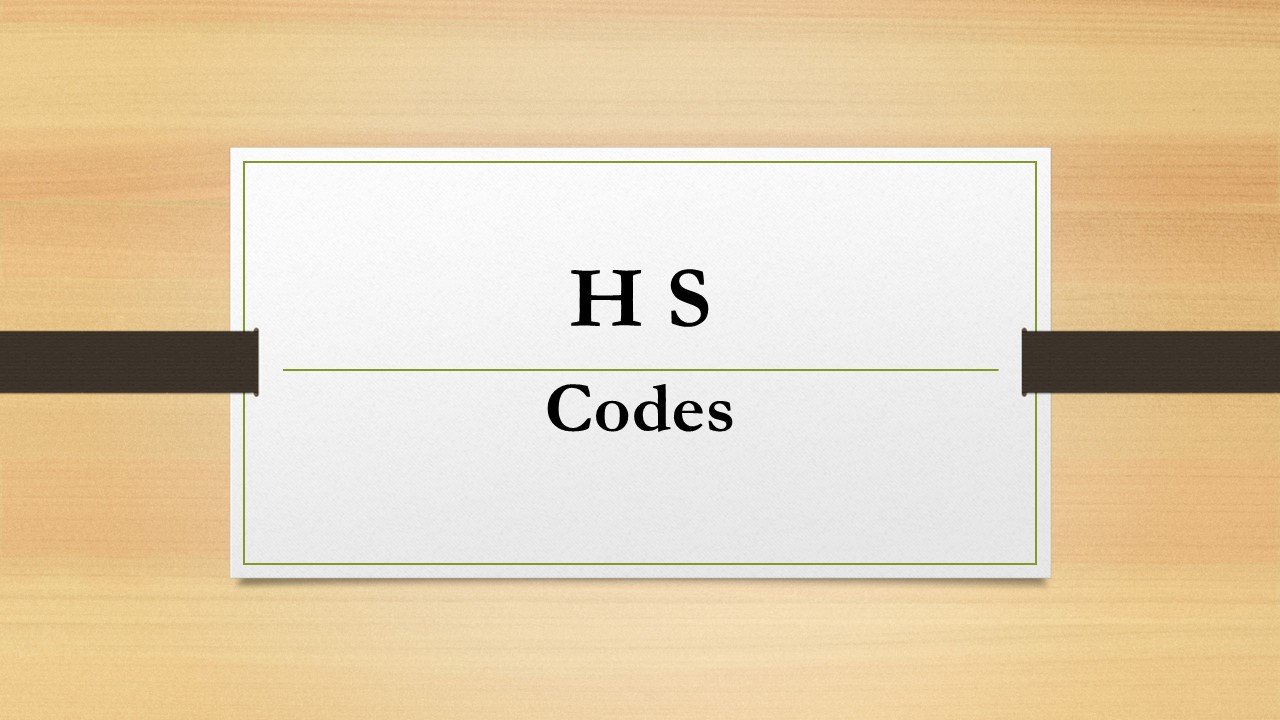In today’s interconnected global economy, trade between nations has become commonplace, facilitating the exchange of goods and services across borders. However, managing these transactions efficiently requires a common language that transcends geographical and linguistic barriers. This is where the Harmonized System (HS) Codes come into Play.
The Harmonized System of tariff nomenclature is an internationally standardized system for classifying traded products. These are identification codes given to goods for use in international trade. Developed and maintained by the World Customs Organization (WCO), the HS system was first introduced in 1988. Its primary objective was to create a universal classification framework that could streamline customs procedures and facilitate international trade. These codes are accepted by most nations around the world, for use by customs authorities and companies to identify goods.
HS Codes are assigned to products, enabling customs authorities and traders to classify goods systematically. These codes are structured hierarchically, with each digit providing more detailed information about the product being traded. The first six digits are standardized across all countries that use the HS system, ensuring consistency and compatibility in trade documentation. There is a comprehensive classification system for HS codes. The goods will fall under a section and follow onto chapters, headings, and sub-headings, each step increasing in specificity. In practice, product codes are longer than the 6 codes used in the HS. This is because different countries will have different additions to HS codes to convey important information about the goods.
Some examples:
| HSN Code | Description |
| 9701 | Paintings, Drawings and Pastels, executed entirely by hand |
| 970110 | Paintings, Drawings and Pastels |
| 97011010 | Madhubani Paintings (On Textiles) |
| 97011020 | Kalamkari Paintings (On Textiles) |
| 97011090 | Other |
| 9703 | Original sculptures and statuary, in any material |
| 970300 | Original sculptures and statutory in any material |
| 97030010 | Original sculptures and statutory in metal |
| 97030020 | Original sculptures and statutory in stone |
| 97030090 | Original sculptures and statutory in other materials |
HS codes are used by customs authorities to apply tariffs and taxes on goods/commodities and to keep track of imports and exports. Further, many trade agreements reference HS Codes to determine eligibility for preferential tariffs or duty exemptions. Hence wrong usage of the HS code could result in an improper tariff being applied by customs, which can increase the cost of imports to the customer. The correct HS codes must be used in legal and commercial documents when undertaking trade. Some examples of use are in sales contracts, invoices, bill of lading, certificates of origin etc.
Local authorities levy tax/ GST based on HS codes.
In recent years, efforts have been made to enhance the HS system to accommodate emerging technologies and new trade patterns. For example, revisions to the HS system are periodically undertaken to incorporate changes in product composition and technological advancements. These revisions ensure that the HS system remains relevant and adaptable to the evolving landscape of international trade.
Conclusion: HS Codes play a vital role in facilitating cross-border transactions by providing a standardized framework for classifying traded goods. Originating from the World Customs Organization, the HS system has gained widespread acceptance and adoption globally. Its usage simplifies customs procedures, enables accurate tariff assessment, and supports the analysis of international trade trends. As international trade continues to expand, the importance of HS Codes in facilitating seamless transactions is expected to grow, making them an indispensable tool for businesses engaged in global commerce.
International buyers are advised to check the home country’s customs duty or tariff, if any, for the HS code for the products they buy.


